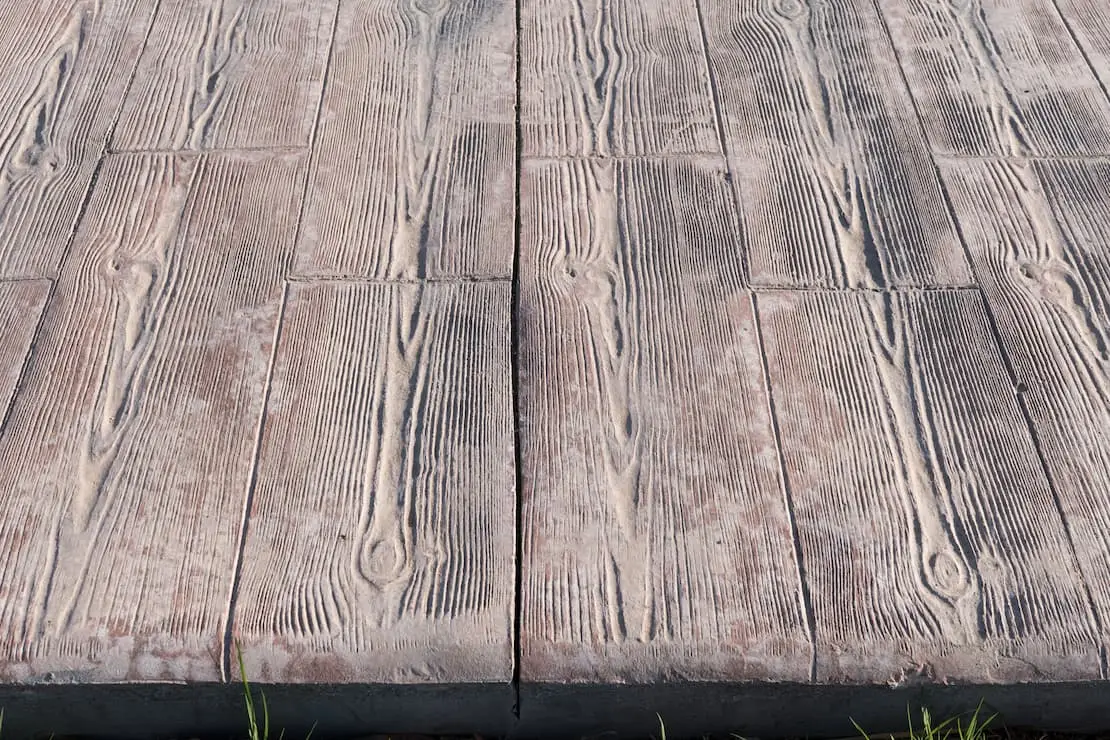
Wood is a material that brings warmth wherever it is established, generating a pleasant feeling of welcoming. It is also a product that perfectly combines with other materials, making it very satisfying to use it to generate attractive contrasts that give rise to more modern rooms.
With stamped concrete we achieve all that and much more, since it retains the great advantages of wood, plus being infinitely more economical, as well as much easier to maintain, as it is a high-strength coating with a prolonged useful life.
What is wood-like stamped concrete?
Wood-like stamped concrete is the result of an innovative process in which a special mold that imitates the shape, texture, and color of wood is stamped on fresh concrete. This technique is mostly applied to pavements, but there is also the option to use it on vertical surfaces.
It gives environments the same elegance and sophistication as if they had been originally worked with wood, however, its advantages have been enhanced and in addition to having been able to apply it at a more economical price, it should also be noted that its installation is much simpler and that the conditions of the support will be much more durable, especially outdoors where wood is more prone to weaken.
A product that, as seen, is not too complex but its effectiveness is undeniable, a strong reason that has made it one of the most demanded options by restoration experts.
Reasons why wood imitation stamped concrete is the alternative to succeed
We will outline the reasons that make evident why choosing wood imitation stamped concrete is a guarantee of success. A finish that enjoys a rapidly growing popularity and with which you will be completely satisfied.
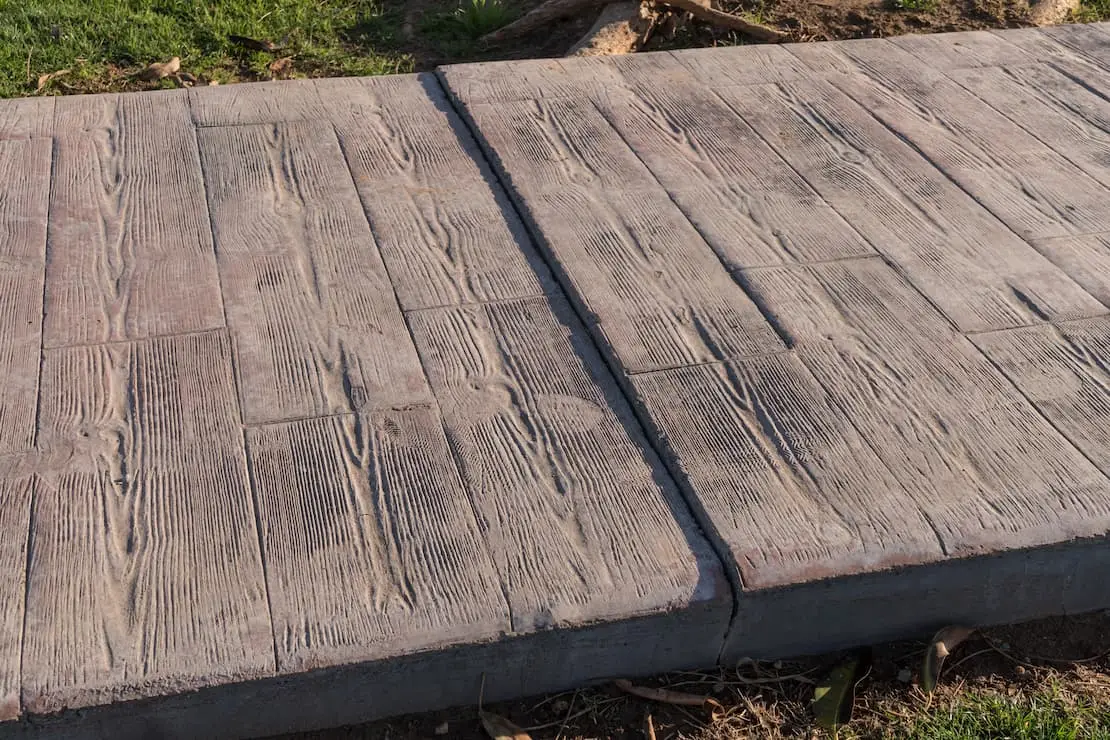
More eco-friendly
One of the most compelling reasons to side with concrete over wood. The negative effect of working with wood is undeniable, as it promotes deforestation, a phenomenon that is causing serious environmental consequences. With wood imitation stamped concrete this problem is over, as you only need a mold that is stamped onto the product and you will get our surface with the desired look.
More economical
When it comes to refurbishing a space with wood, the process is far more complicated as you will need to rebuild the previously built area. How does this translate? In money, as the renovation will be more labor intensive, will require more installation hours, and greater efforts. Stamped concrete has the great virtue of being applied directly onto the existing support, making it simpler and therefore less expensive.
More resistant
Continuing with the previous point, wood is clearly a fragile product that requires excessive maintenance, evidence of this is that it more regularly requires the use of varnishes, in order to improve its resistance and maintain it in optimal conditions. Stamped concrete displays considerable durability, contributing to a long product life.
With wood, you will know its limitations as it is not advisable to use it in any environment. Elements such as moisture can damage this material extensively, which is why if the terrain is outdoors or in a bathroom, its condition can easily deteriorate, decaying and consequently, rotting the wood.
The fact that you cannot use it wherever you want is already a real headache, unlike wood imitation imprinted concrete, a coating that easily adapts to any environment: pools, terraces, gardens, bathrooms... You won't have to worry about its condition, just enjoy the peace of mind that it provides, knowing that it can endure any phenomenon perfectly.
Concrete is resistant to sudden changes in temperature, moisture, wear by abrasion, pedestrian traffic wear, stains, scratches, and impacts. Want more potential? In that case, protect it with a varnish layer to achieve a completely waterproof and fortified surface, which should be renewed every 2 to 3 years, so you won't have to worry too much.
Less maintenance
As we have mentioned, its maintenance is minor. It only requires the use of household cleaning products such as brooms or a surface cleaning with water for the area to look as good as new. However, if preferred, a specialized detergent can also be used to ensure even more outstanding cleaning.
Discover the virtues of wood imitation printed concrete
Wood imitation printed concrete is becoming the ideal alternative not only for the material we are discussing, but also as a successful decorative option over many other products. Quite logical considering that it gathers everything necessary to offer high-performance aesthetics and functionality. Here are some of its most distinguishing and noteworthy properties:
- Aesthetically, it offers a wide variety of finishes. It can imitate different types of wood such as: oak, walnut, pine, maple, among others. Varying in shape, colors and textures.
- Stamped concrete guarantees the surface a long service life due to the large number of resistances described above. And all this without hardly needing maintenance.
- Its installation is really simple and cheap, requiring less time and saving you exhaustive remodeling processes.
- One of its great virtues is that using decorative concrete prevents the growth of mold and weeds.
- Neither the sun nor the rain make the material lose color, which makes it an ideal coating for outdoors.
- Its application knows no limits as it is equally effective on interiors, exteriors, floors and vertical walls.
- It has the ability to make surfaces anti-slip and waterproof.
Process of making wood imitation stamped concrete: step by step
Its application is surprisingly simple, as long as you have a professional applicator with experience in decorative renovations and knows how to bring out all the properties of wood imitation stamped concrete. Now we will show you point by point the steps to consider:
1. Selection of the mold and the surface
In this step we must define the mold we want to use, as well as choose where we will stamp said mold: floor, wall, pool area, interiors, exterior...
2. Delimitation of the surface
The work area should be specified and the ground prepared for the correct application of the concrete. Cleaning the surface and checking if it is well leveled, if not, proceed to leveling. It will be compacted and framed.
3. Application and smoothing of concrete
Cover the surface evenly with the product. As advice, it is recommended to use a mesh that reinforces the coating. Finally, proceed to smooth with the help of a trowel or float.
4. Trowelling the concrete
The surface must be troweled when the concrete is still fresh and has begun to cure.
5. Colouring of concrete
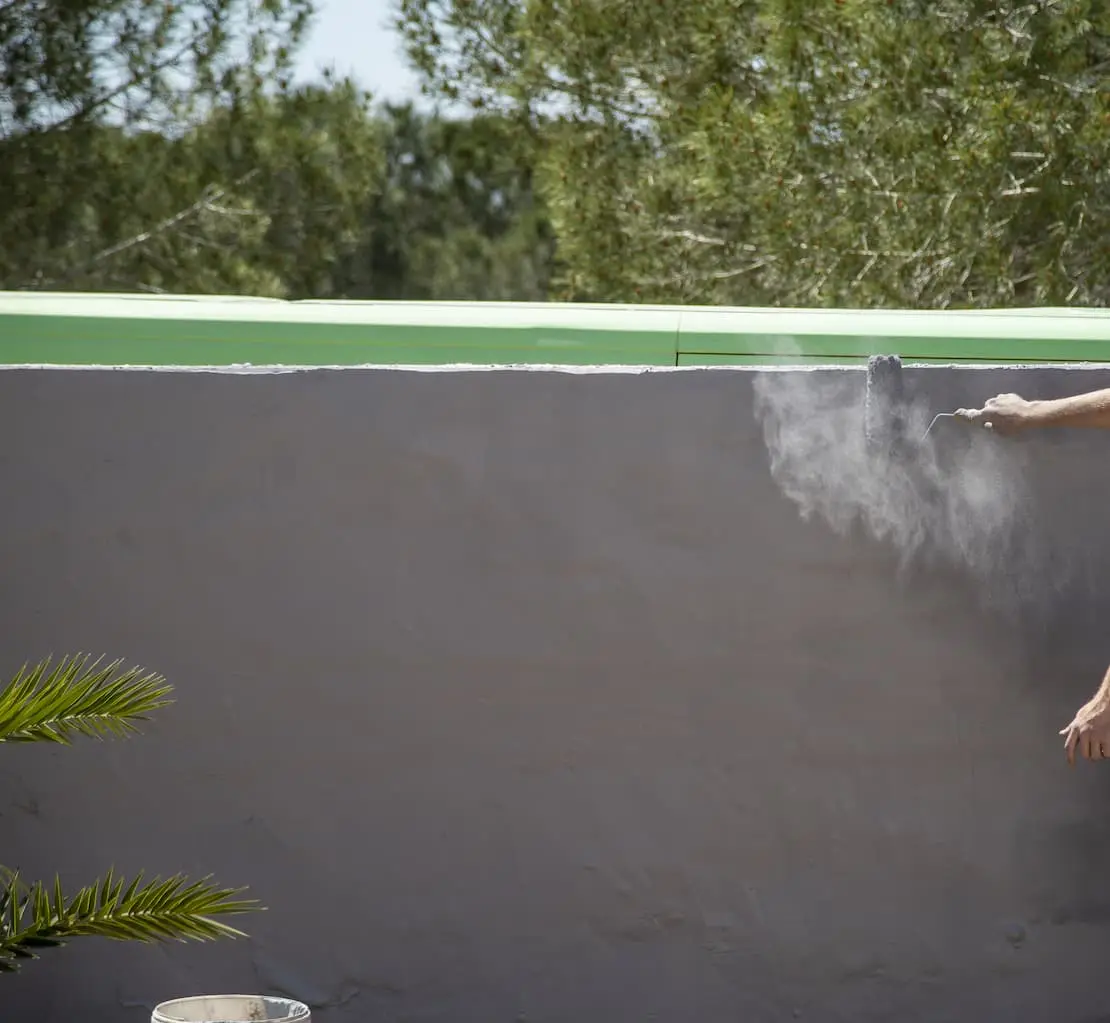
In this step, the layer of mortar or flooring will be added to the concrete to give it color. We will sprinkle the proportions indicated by the manufacturer and finally it must be floated to firmly insert the product and smooth it.
6. Application of the release agent
Valid for both powder and liquid version. This product prevents the concrete from getting embedded inside the mold.
7. Stamping the mold
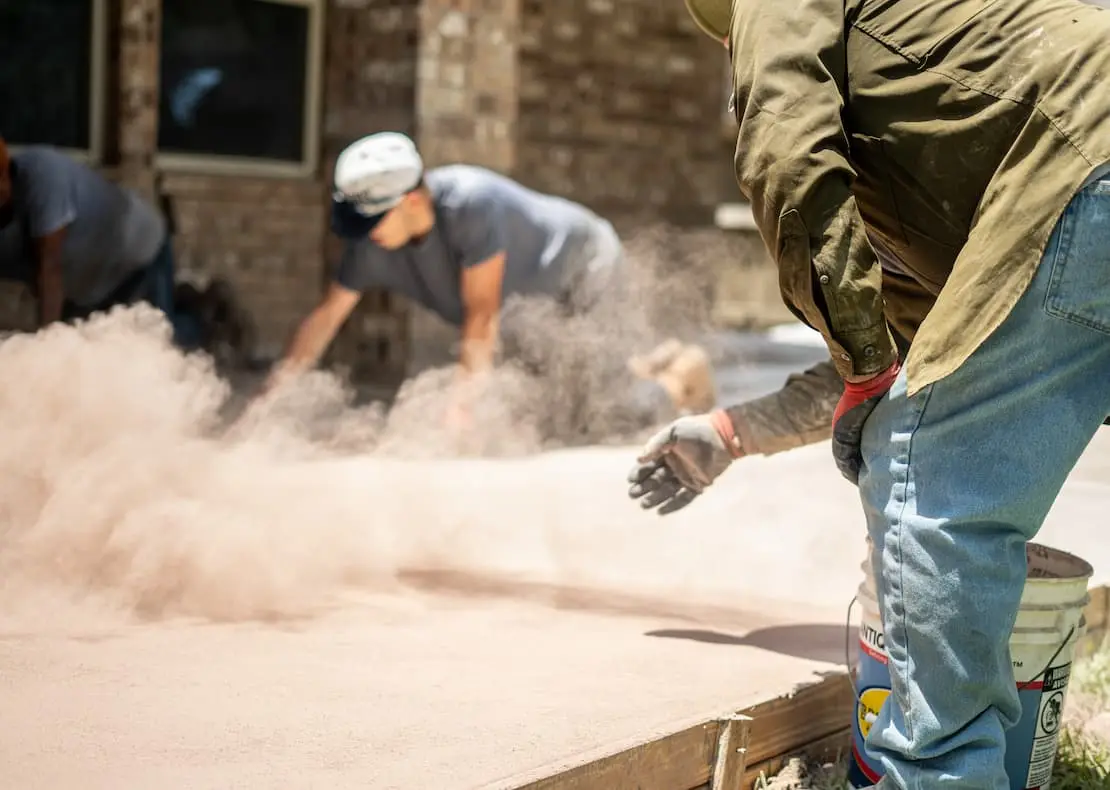
Apply the mold chosen in step 1 to define the design on the concrete. We will assist ourselves with our feet or a stamp to imprint it satisfactorily.
8. Cutting printed concrete joints
You are recommended to use an electric cutter for straight lines.
9. Removal of release agent and cleaning
Remove the release agent from the surface. After about 72 hours, wash and remove the remaining residues.
10. Applying varnish or resin to stamped concrete
Para aportarle una mayor resistencia e intensidad al color se recomienda aplicar un barniz o resina protectora que garantizará una mayor vida útil. Previamente se deberá comprobar que el soporte está seco del todo.
Wood imitation stamped concrete molds
In order to achieve a surface that mimics the finish of original wood, the use of certain specific molds is necessary. As the intention is to achieve as realistic effect as possible different molds can be imprinted that present other wood patterns, that way the aesthetics of natural wood will be accurately reflected.
The use of these molds can be made on any type of surface, wherever wood is usually decorated and much more, obtaining a more resistant product. Its aesthetics will reflect an environment of great elegance where you can play with textures and colors, as well as the contrast with other materials.
En MyRevest contamos con una gran diversidad de Concrete molds that perfectly mimic wood and have excellent characteristics for their impression on the surface.Dream come true: wood-effect stamped concrete in pool
A wish that can now be fulfilled, to coat the outdoor pavement of a pool with a wood effect. Until this moment for many this idea seemed unfeasible, since simply the fact of wood in contact with water it was already known that it would require even more maintenance. Today, with the wood imitation stamped concrete, the ideal product has been found to become the best alternative.
A fundamental and basic reason is aesthetics, as the results it offers are truly realistic. Added to this are its technical properties which, as we have mentioned before, this decorative covering guarantees us a waterproof and non-slip surface, two aspects to take into account in this type of terrain.
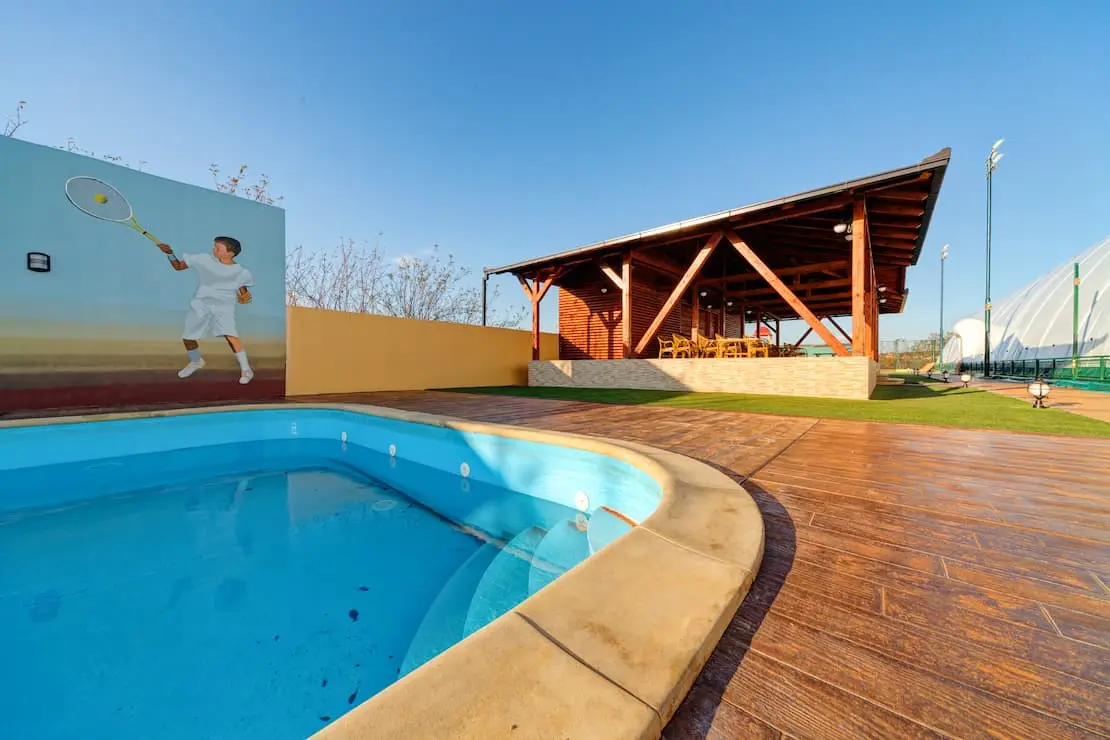
Price of wood imitation stamped concrete: variables you should know
The good news is that, compared to other decorative alternatives, wood imitation stamped concrete is considered one of the most economical. The downside is that a specific budget for its use cannot be defined a priori, as this will be determined based on variable factors that we will present below.
- Geographical area: one of the most important factors and, therefore, the one that will most mark the final price. Based on this variable the budget can vary drastically as its role will determine to a greater or lesser degree the complexity of the reform. An example would be in extremely humid cities. In this type of terrain the professional will have to carry out certain tasks prior to installation that will ultimately lead to an increase in cost.
- Labor cost: this price will be stipulated by the construction company, as well as the cost of tools and machinery used.
- Square meters: the smaller the surface, the cheaper the installation will be. The thickness of the concrete also influences this aspect.
- Quantity and quality of material: something that is obvious, the more product required and the higher its quality, this will increase the final cost. It should also be considered whether varnish or other products will be applied.
- Complexity of the finish: going simple is always more affordable, so if you are looking for a surface that combines designs, colors, shapes and textures, the price will increase.
As an estimate, it can be said that imprinted concrete currently in Spain is about 15-30 euros per square meter. However, we should not forget that this is just an approximation, to estimate a figure in a secure manner, it is best to contact an expert who knows how to develop a detailed budget.